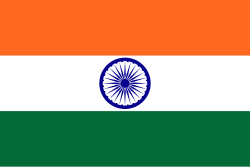A surge in COVID-19 cases is being observed across several Asian countries, driven by the JN.1 sub-variant of Omicron. Despite the uptick, health authorities emphasise that the infections remain predominantly mild, with no significant increase in severity or mortality. India, while reporting new cases, maintains that the situation is under control, with health systems on alert and surveillance measures in place.
The JN.1 variant, a descendant of the Omicron BA.2.86 lineage, has been identified as the primary driver behind the rise in cases in countries such as Singapore, Hong Kong, Thailand, and China. In Singapore, cases escalated from 11,100 to 14,200 within a week, while Thailand reported an increase from 6,000 to over 33,000 cases in a similar timeframe. China’s healthcare system is under pressure due to the spread of Omicron subvariants XDV and NB.1.8.1.
In India, the Ministry of Health and Family Welfare reported 257 active cases as of May 19, with the majority being mild and not requiring hospitalisation. States such as Kerala, Maharashtra, and Tamil Nadu have reported the highest numbers. Health authorities have issued advisories urging the public to adhere to preventive measures, including mask-wearing and hand hygiene, especially for vulnerable populations.
The World Health Organization has classified JN.1 as a Variant of Interest, noting its rapid spread but also indicating that it does not currently pose a significant additional public health risk. Symptoms associated with JN.1 include cough, cold, runny nose, fever, gastrointestinal issues, loss of smell or taste, fatigue, and headache.
In response to the rise in cases, Indian states are enhancing their preparedness. Jharkhand’s Rajendra Institute of Medical Sciences has activated isolation wards and ICUs, despite no reported cases in the state. Tamil Nadu continues surveillance of JN.1 cases, with health officials advising those with symptoms to avoid public places and recommending mask usage for high-risk groups.




 How The State Administrations In India Have Been Harassing The Journalists?
How The State Administrations In India Have Been Harassing The Journalists? 